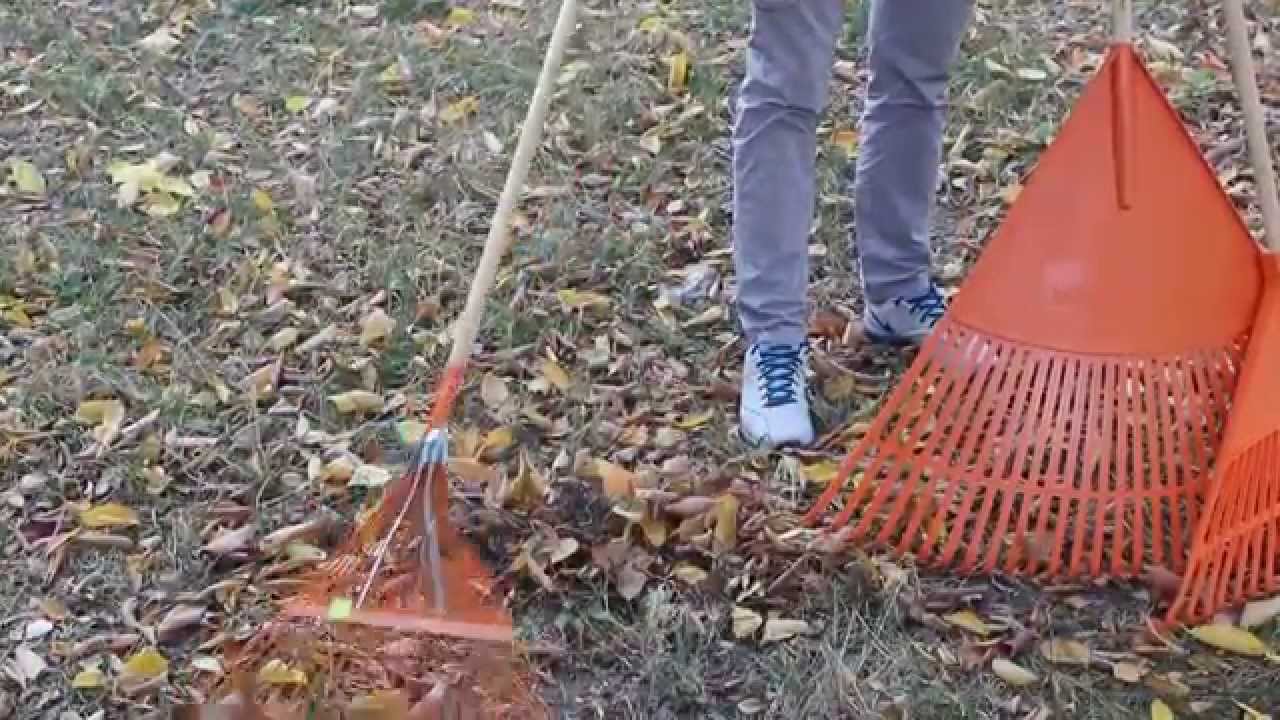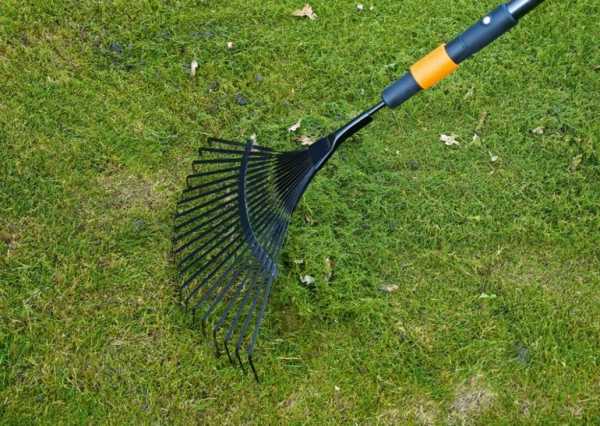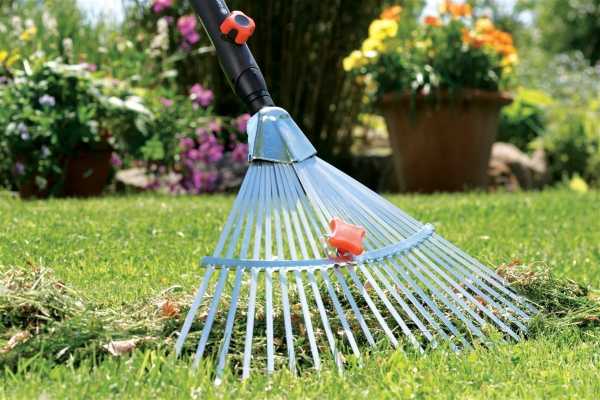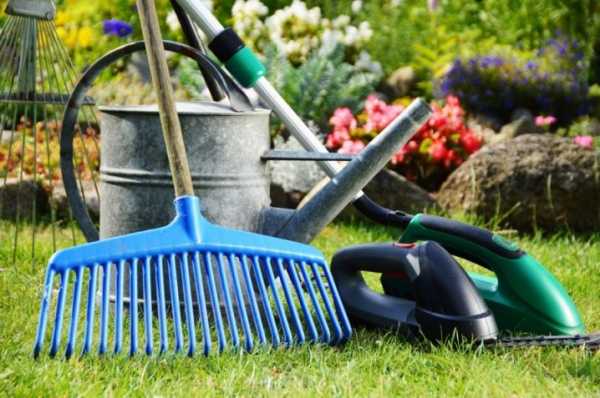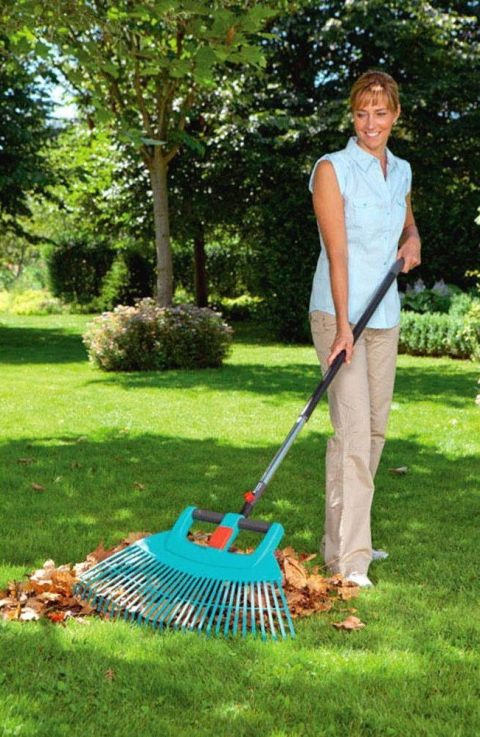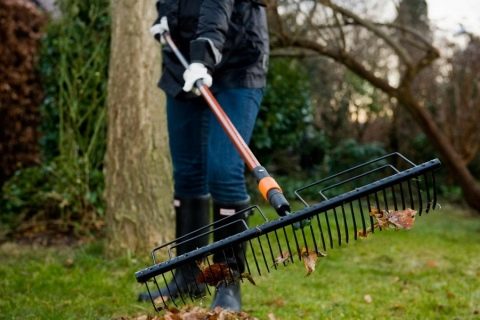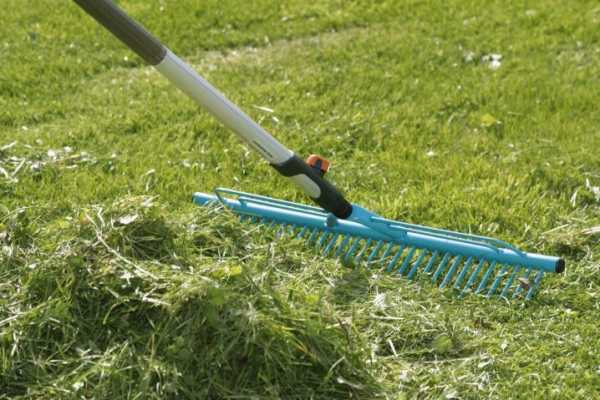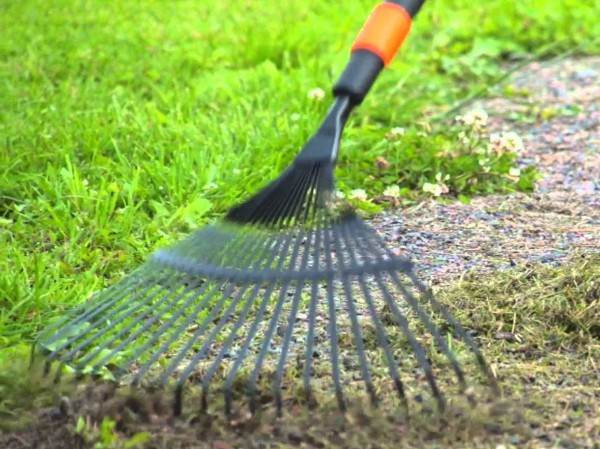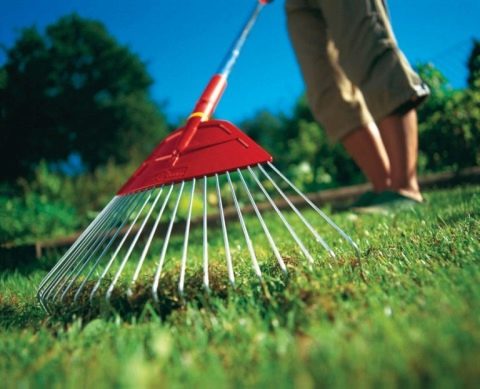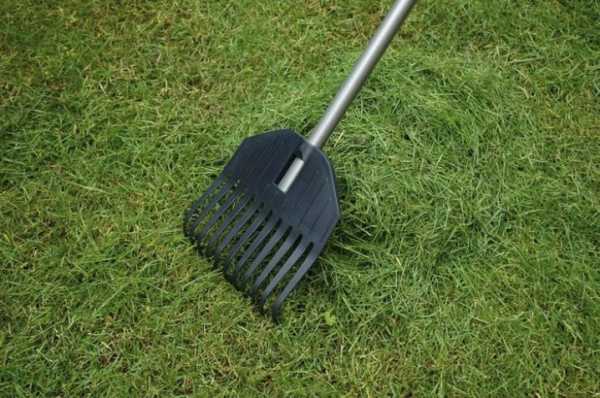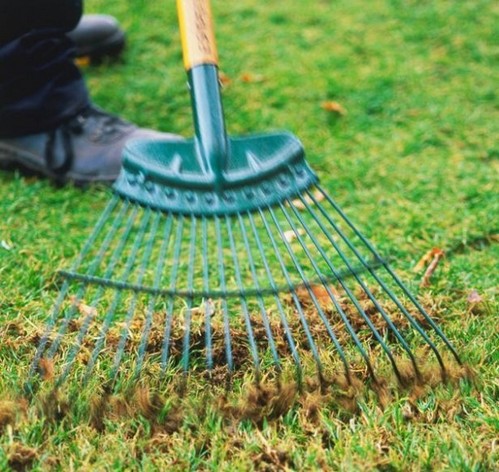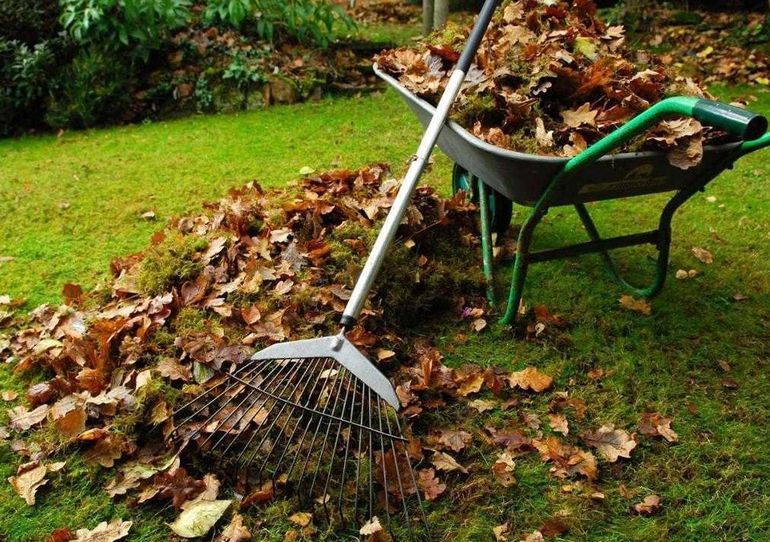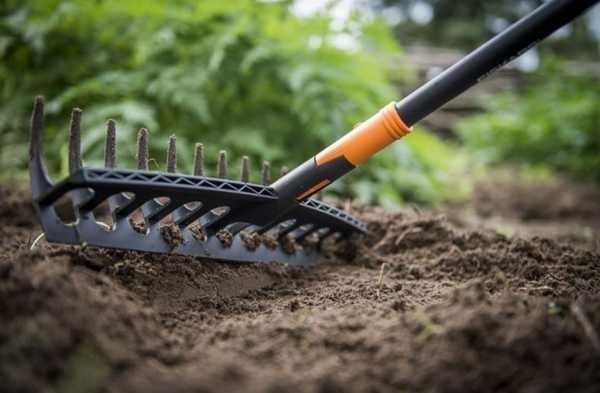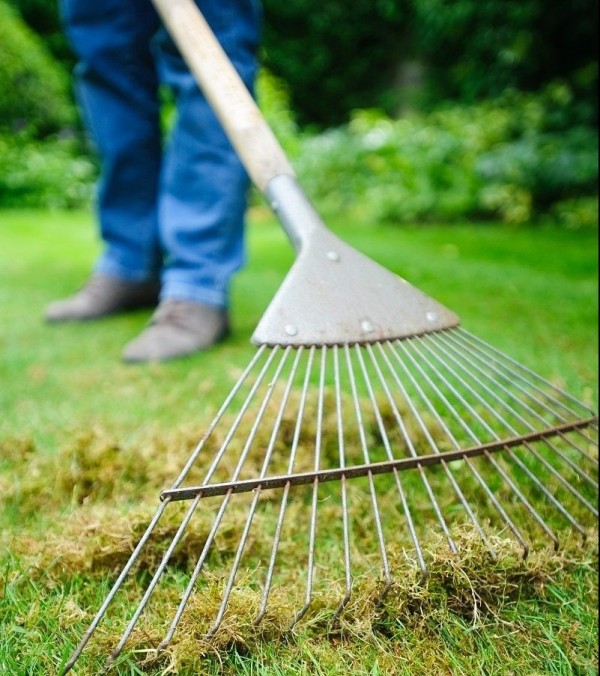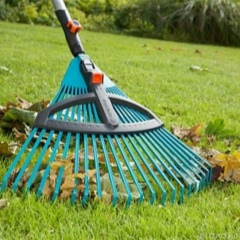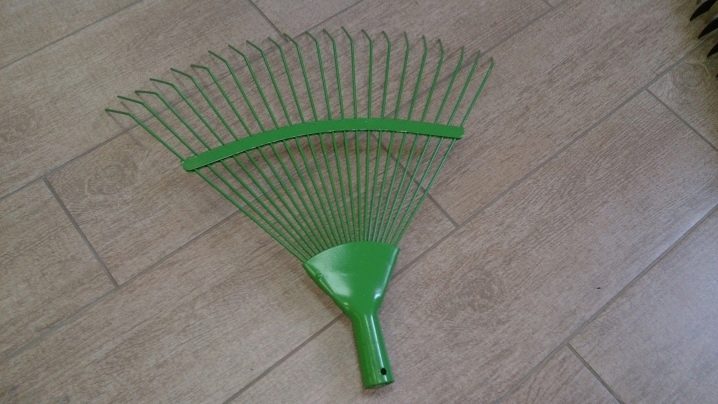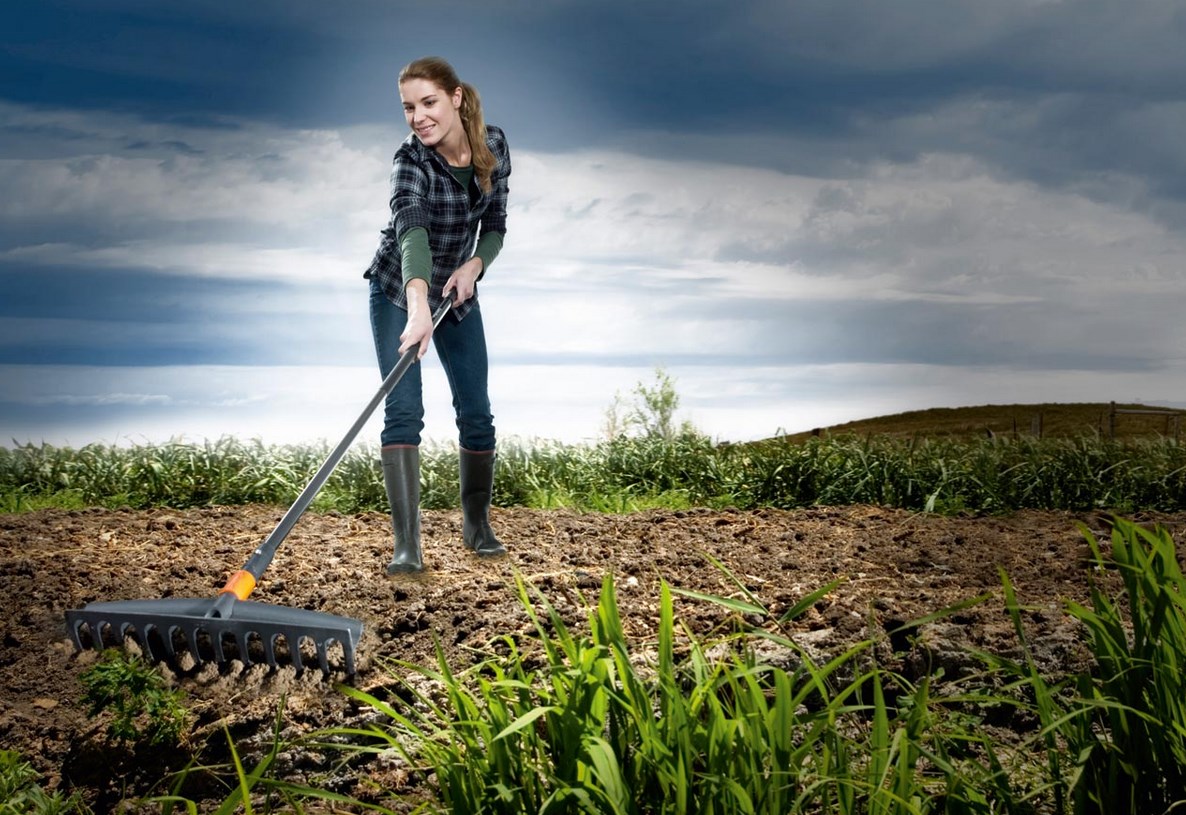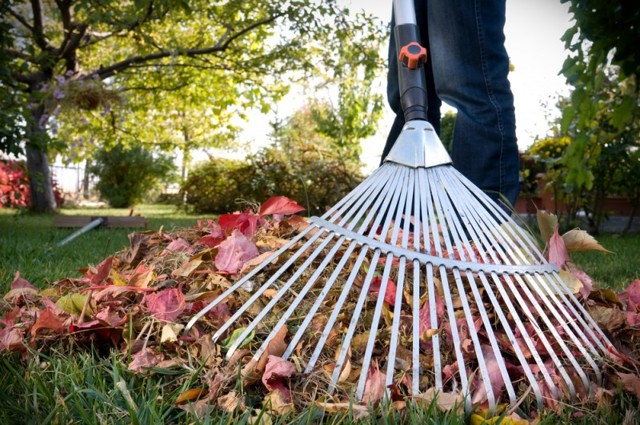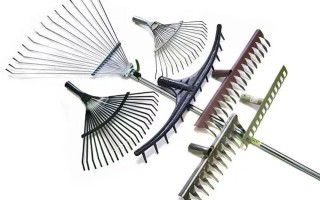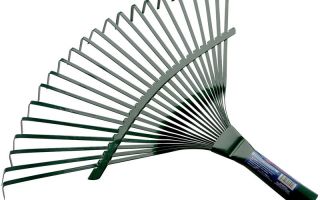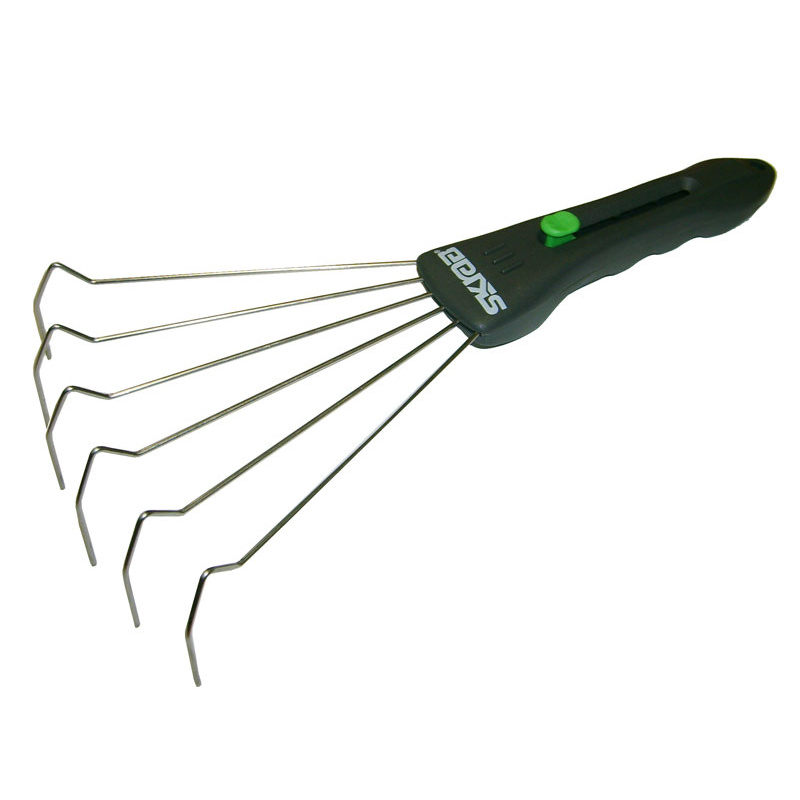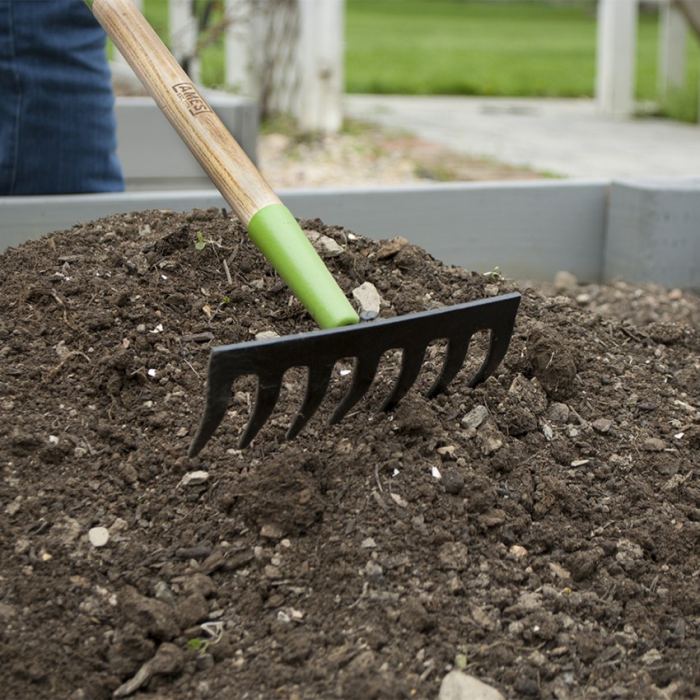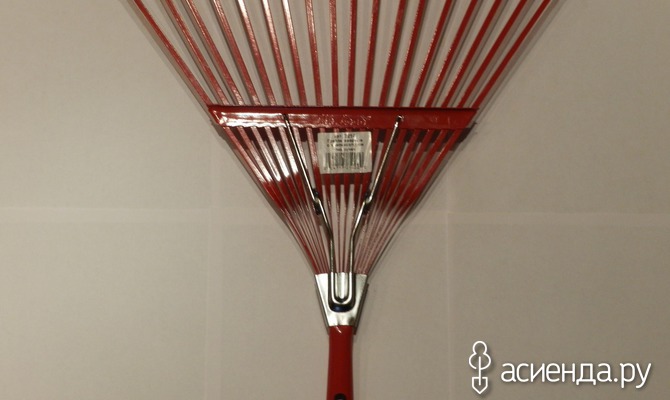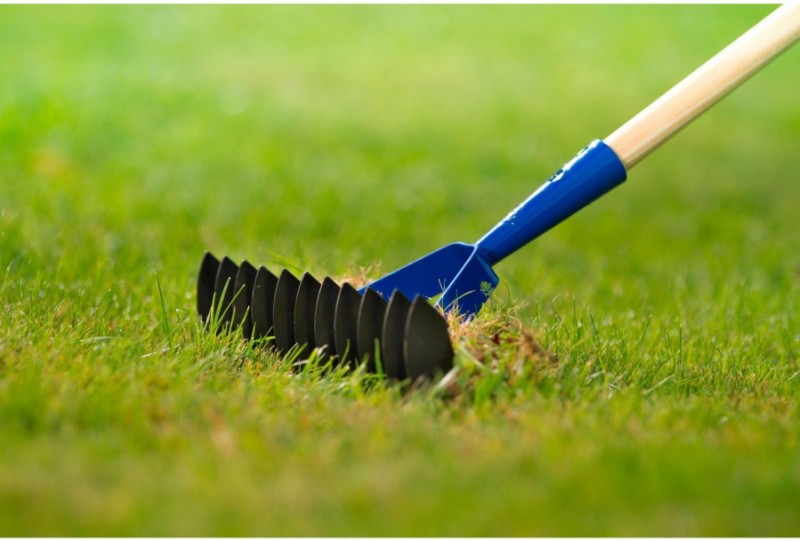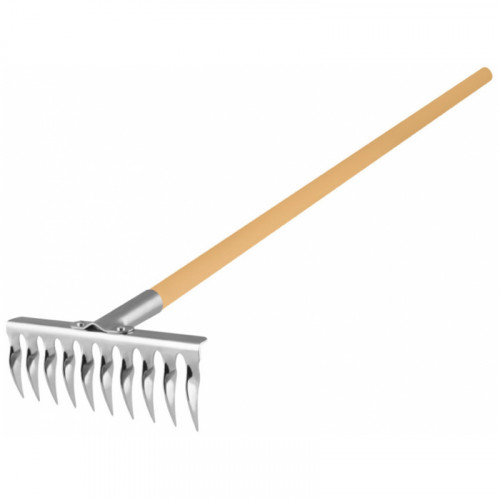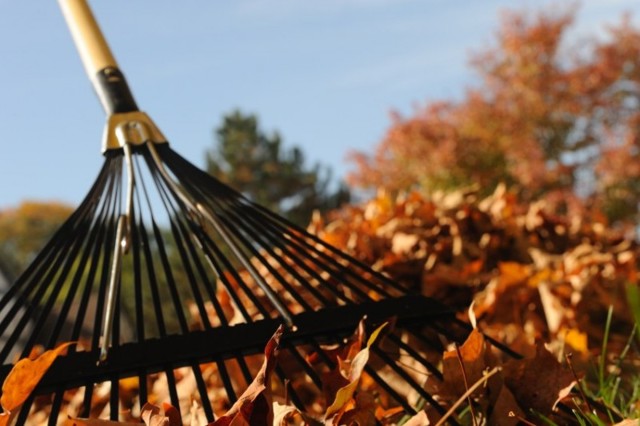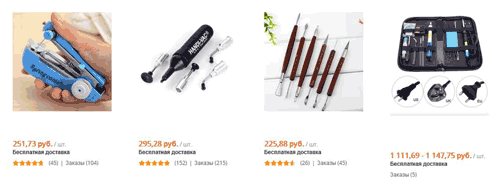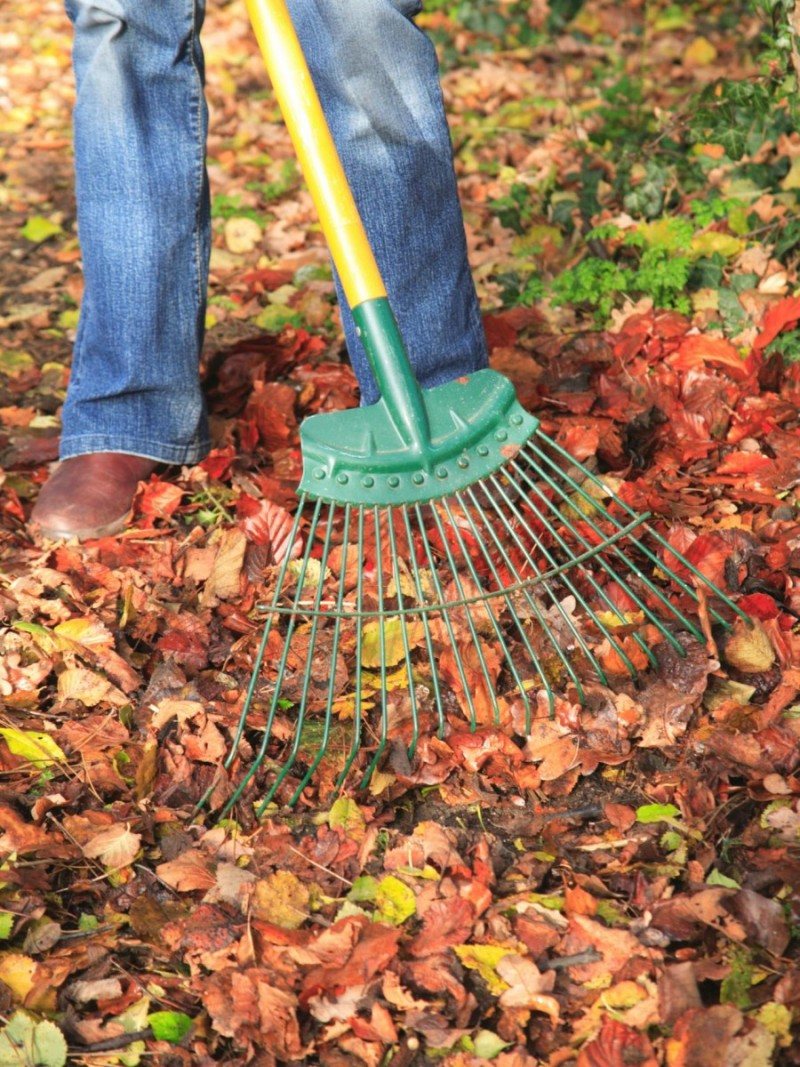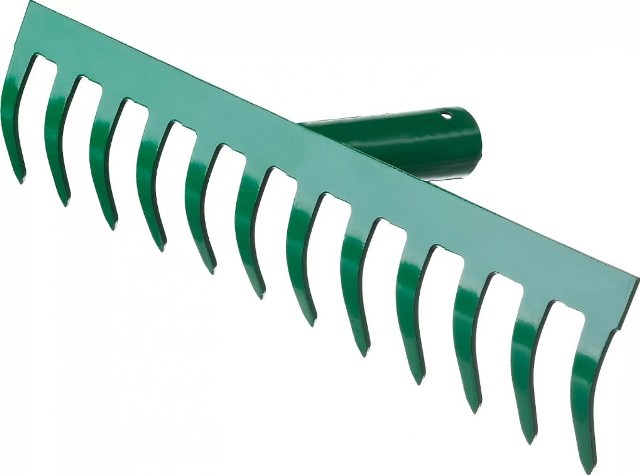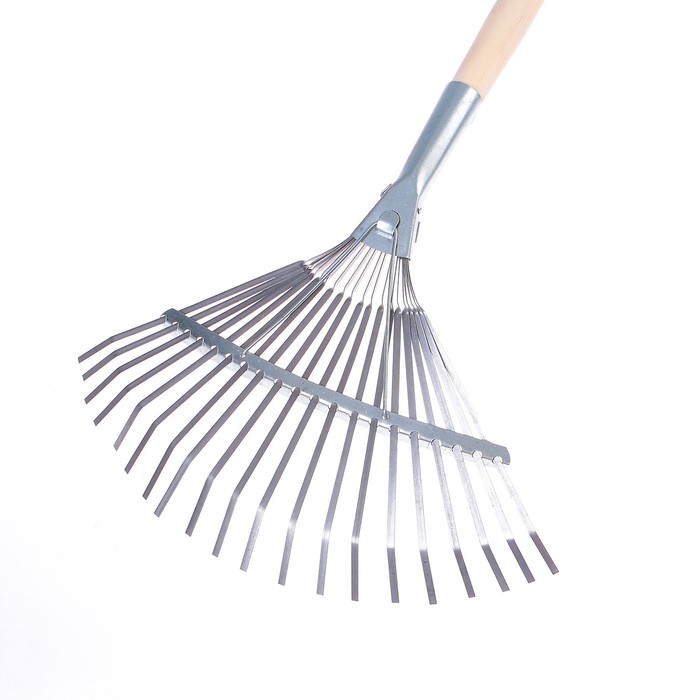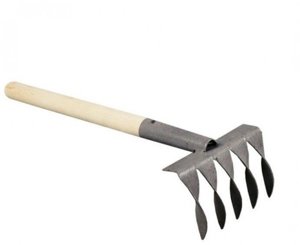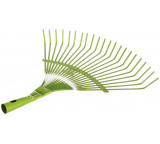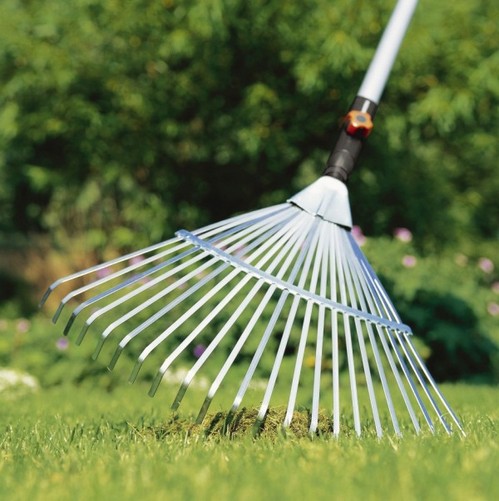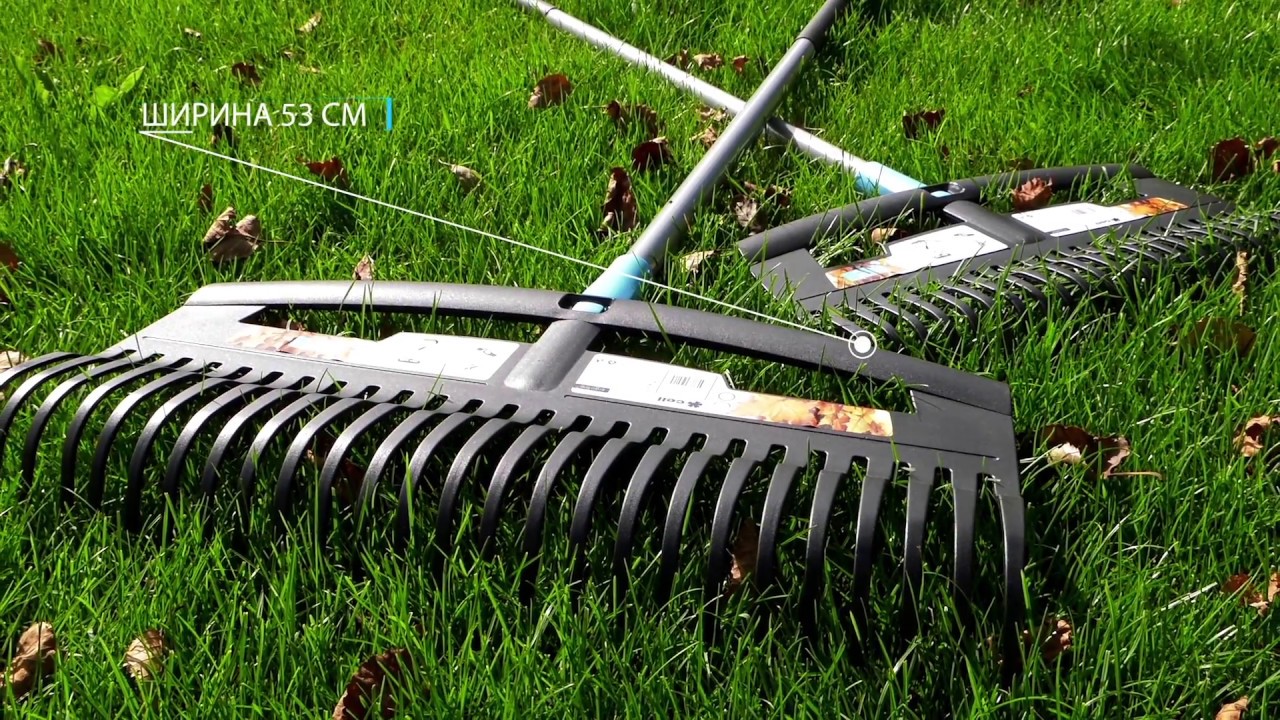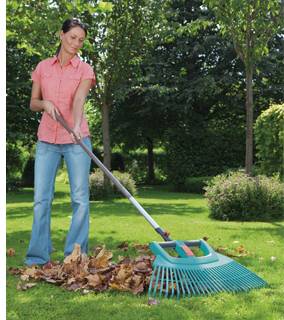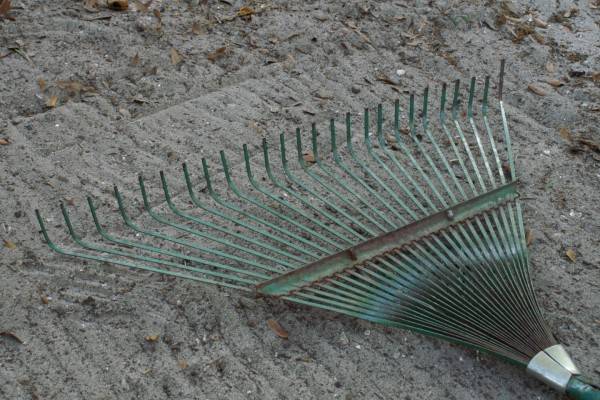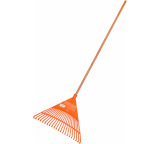Views
On the shelves of modern specialty stores, you can see a large number of types of rakes, which differ in the type of construction:
- Erfurt - the shape of the handle at the point of attachment to the handle in the form of a fork;
- American - the presence of arcs in the place where the handle is fixed;
- English - fixing the handle through the sleeve.
Direct
The classic suburban model, which consists of a crossbar, on which straight or curved bayonets are fixed perpendicularly. This tool can be made of metal and wood. A metal rake can have twisted teeth and be used to loosen the soil, and wooden tools are used only for work with dry grass and leaves. Straight rakes can be divided into three types depending on the width of the transverse plate:
- small - the width of the plate is not more than 25 cm;
- medium - the width of the metal sheet is 50 cm;
- large - the size of the plate is more than 60 cm.
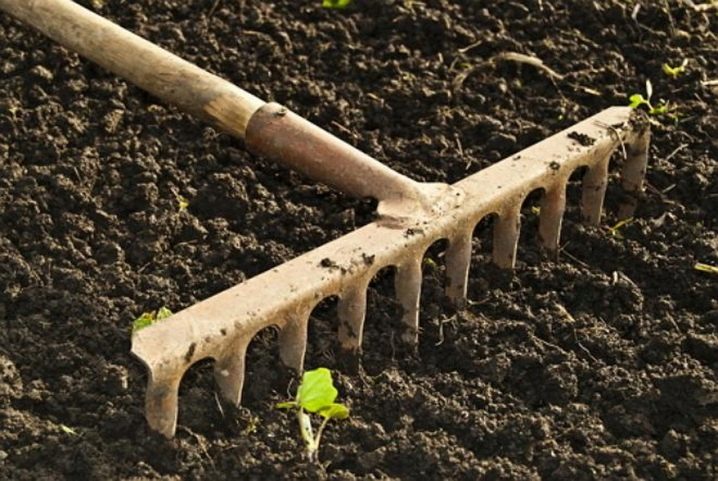
Fan-shaped
A special sliding tool, the shape of which resembles a triangle, and the working part consists of a large number of wire teeth, which are rounded at the end. For the manufacture of teeth, a thick wire is used, the diameter of which is 0.3 cm. On sale you can see a plate rake made of metal and plastic. This model is suitable for cleaning light debris and leaves from uneven surfaces.

Aerators
A non-standard model that has the shape of a classic rake. The main feature is the pointed sickle teeth. This device will help not only clean the surface of the lawn from debris, but also make a little aeration.

Milling
Double-sided rake that has a wide area of use and an unusual design. On one side of the metal plate there are sharp sickle-shaped teeth, and on the other side there is a row of teeth that have a small distance between them.
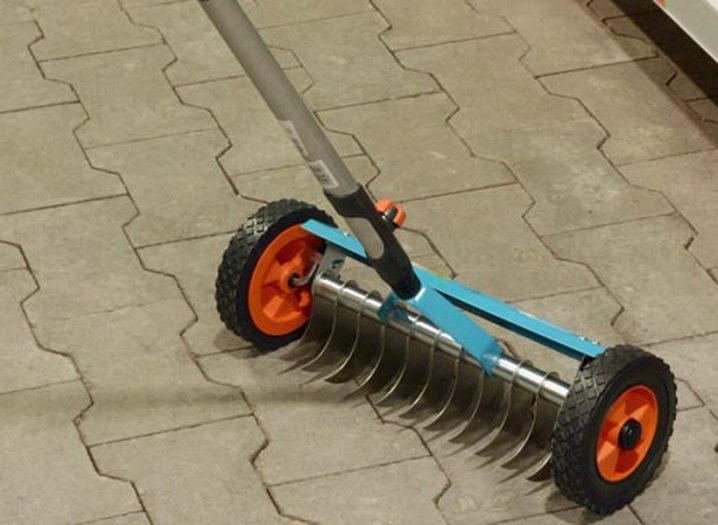
Specialized tool
Possesses high productive and ergonomic properties, it is used in a narrow area.
For the lawn. The width of the working part is more than 50 cm, and the teeth are close to each other. On the working surface there are limiting rods that make it possible to rake a large amount of grass and move it to its destination.



For loosening - a heavy tool with twisted or straight teeth for excavation work.
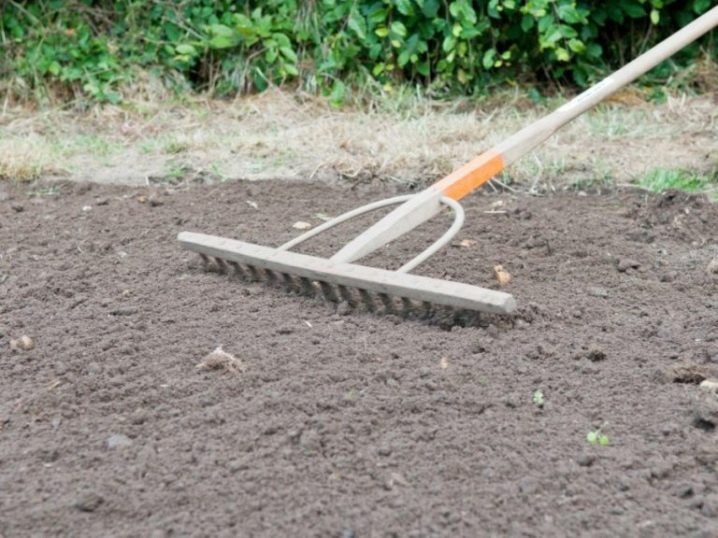
Mini rake
A miniature tool that has a small number of teeth. Purpose - tillage in a flower bed, in flower pots and containers.

Transformers
A universal tool that consists of an aluminum handle, a set of plastic attachments and a quick-release device. Advantages - convenience, versatility, portability, ease of use, long period of operation.
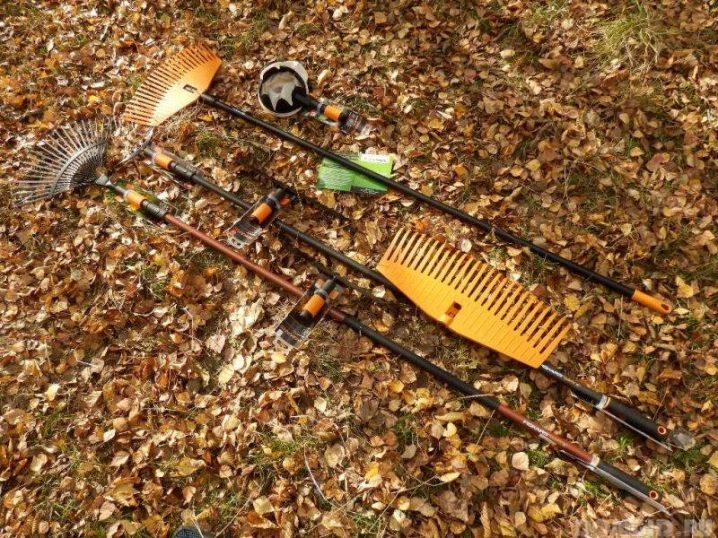
Particular attention should be paid to the walk-behind tractor rake, which significantly speeds up the process of making hay for animals (raking, turning and collecting). Advantages - minimal expenditure of physical efforts, durability, reliability and high speed of work
These devices differ in the following parameters:
- method of manufacturing the working part;
- type of traction used;
- type of attachment.
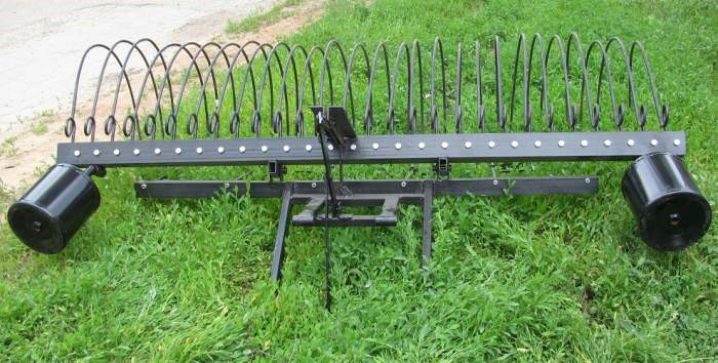
Manufacturers note the following among the main technical advantages:
- large width of capture;
- roll formation;
- high level of productivity;
- low financial costs;
- set number of rake passes;
- high maneuverability;
- automatic control mode.

Manufacturers produce two types of devices for small tractors.
- Wheeled-mounted - the number of wheels installed obliquely ranges from 3 to 5. Advantages - low cost of spare parts and ease of installation, durability, powerful drawbar and frame, convenient wheel adjustment, simple control system.
- Rotary - consist of horizontal discs that drive the engine through the PTO.
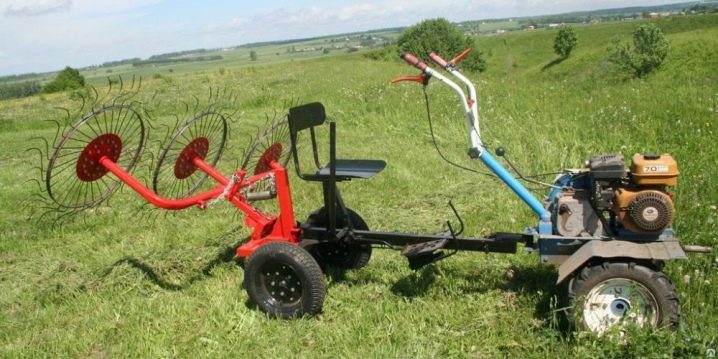
How to choose the right tool for you
When choosing a rake, it is worth paying attention not only to the type, but also to the quality of the raw materials from which they are made. The most durable are wooden and plastic, and the most durable are galvanized and steel
Iron, which are now the most common, at first, of course, will serve well, but they are not ideal.
Before making a purchase, you should decide for what purposes the tool will be used. Do not forget that wooden and plastic rakes are intended primarily for harvesting dried grass, leaves and small twigs, and metal ones are needed for work on the ground. A rake with sparse teeth is suitable for collecting large debris, and rakes with frequent teeth are suitable for small debris. For work in flower beds, models with a narrow grip are taken, and if you plan to work in large areas, you should choose wide ones.
If there is a possibility that several people will work with the tool, then it makes sense to purchase a rake with a telescopic handle. It is so easy to find the right length.

When choosing, close attention should be paid to the length of the grip. If the stalk is too short or, on the contrary, long, then it will be inconvenient to work and fatigue will come very quickly.
The correct cutting length is especially important when using a rake on the ground, as it is more energy intensive than harvesting foliage and dry grass.
If the stalk is made of wood, then you should pay special attention to the fact that there are no chips, notches, twigs and other flaws on its surface. Whatever it is made of, be sure to look at the place of attachment to the rake
When assembled, the handle should fit snugly and not wobble. The tool should be one whole.
If you plan to buy a very expensive model of a rake (for example, titanium), then first you need to choose a retail outlet where the seller can provide a quality certificate for review. Even the most expensive rake has its weaknesses and shortcomings (even if they are insignificant) and the sales consultant should tell about them. It is advisable to visit the manufacturer's website in advance and study all the information they have. If there are familiar summer residents or amateur gardeners, ask them if they know anything about the model of interest, and it will not be superfluous to walk through social networks and forums and ask the opinion of people who are already using this device.
Advantages of a fan rake
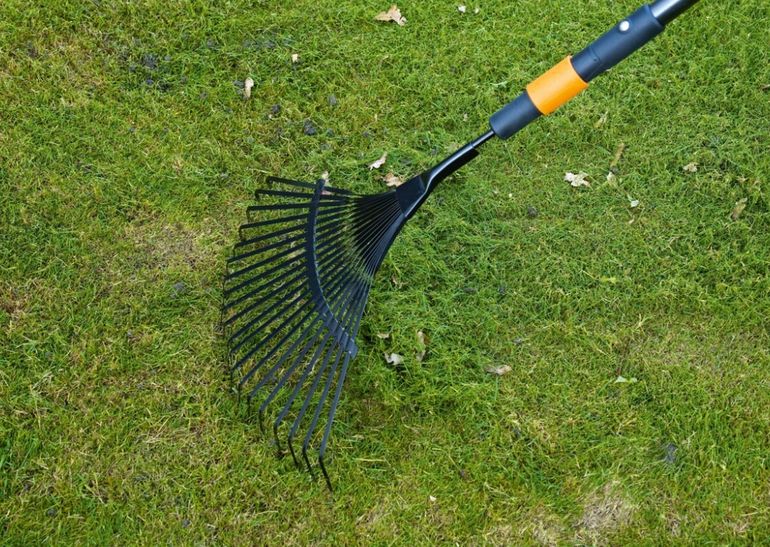
The fan-type rake looks like a broom. This type allows you to cope with the task with ease, as thin teeth instantly rake in fallen leaves and dry grass. The working area is made of metal teeth, quite thin and slightly bent at the end. Such a rake is not suitable for preparing mail for planting cultivated plants. But in other cases, they have the following clear advantages:
- to remove small and small debris, you can choose the plastic option. This is due to the fact that its teeth are more elastic and allow you to easily rake debris from uneven surfaces;
- allow you to remove leaves from hard-to-reach places, for example, from under bushes;
- can be used to "brush" the lawn before mowing a little;
- with their help, it is possible to carry out surface aeration of the soil;
- good if you need to facilitate the germination of the lawn or thin it out.
If you need to remove the garden area or summer cottage, then you need to use a nozzle with straight teeth. This will prevent damage to the planted lawn or young shoots. The nozzle is best made of plastic. The rake, which has a triangular fan, can easily cope not only with flat areas, but also with corners and hard-to-reach ones.
Rating of the best rake models
PALISAD 22 teeth, adjustable. Frequent teeth effectively clean the lawn. The transverse plate reinforces the rigidity of the structure. Material - galvanized iron, non-corrosive. The price is around 350-400 rubles.
Grandy lamellar fan-shaped with a handle, 20 teeth. Attracted by the price, below 200 rubles. At the same time, the quality is quite high, it is convenient to work with. The plastic handle makes the tool lightweight and fits comfortably in the palm of your hand.
Straight garden BISON 4-39583. A classic, time-tested model. The teeth are slightly curved, they fit well even in dense ground. The blade is made of high quality hardened stainless steel. Wooden stalk, covered with antibacterial composition. Price in the region of 450 rubles.
Fiskars Solid 135751. Another high quality 12-tooth straight rake model. The price is about 800 rubles, which, according to gardeners, is a bit high.
Gardena 03022-20.000.00, 0.5 m. Serrated, with a good springy working surface and an aluminum handle. The palms do not slip. Lawn cleaning is of high quality. Other attachments are available. The price is high, about 2,000 rubles, but the quality is also higher than that of similar models.
Popular models
One of the most popular on the modern market are the Fiskars fan rakes, which have proven themselves to be reliable and durable. They are of high quality, competent ergonomics and light weight, which greatly simplifies their daily use.
The most popular model of the company is considered to be a rake, which includes an aluminum shank and 5 different removable nozzles. Thanks to this, they are not only versatile, but also easy to transport. The attachments are made of high quality materials, so they serve for many years, even with active use. The wear-resistant plastic is not only corrosion-free, but also easy to clean.
The second most popular rake is Gardena, which is made of plastic and metal. The combination of these materials results in a versatile product that resists corrosion and is incredibly durable. In the company's catalog you can find models that are designed to collect leaves, roses, acorns, small stones and other small items.
Construction and materials
The device of this garden tool is quite simple and consists of two parts: a handle and a transverse bar with teeth attached to it, which serves as a working part of the structure. The number and sizes of teeth can vary for different modifications of the tool and depend on its purpose and the material from which it is made.
A simple garden rake is most often made from the following materials:
- iron covered with paint (disadvantages: large weight and quick wear);
- steel (advantage - long service life; disadvantage - very heavy);
- aluminum (advantages: good quality and relatively low weight);
- plastic (advantage - lightness; disadvantage - low strength);
- wood (advantages: lightness and strength).
Currently, you can buy all gardening tools in stores, but high-quality metal rakes are quite expensive, and wooden rakes are practically not available at all. That is why many summer residents and gardeners prefer to make the tool they need with their own hands.
Manufacturing from wood
To make a stalk and the main working part with your own hands from wood, you need to stock up on several types of wood. For the manufacture of a cutting, it is better to take light wood species, for example, the following:
- pine - light, moisture resistant, but not too strong;
- birch - light, durable, well amenable to mechanical processing;
- poplar - lightweight and easy to process.
To make a working part with teeth with your own hands, you will need harder and stronger types of wood, such as oak, rowan, elm, etc. they are quite heavy and difficult to process, but they will last longer.
First you need to make a block of 60x5x3 centimeters from a suitable tree and plan it with a planer. Then, with a drill, drill several holes with a diameter of 1 to 1.5 cm in the resulting wooden block for teeth at a distance of about 4 cm from each other.
The next step is the production of teeth. It will be easiest to cut them out of wood with a sharp knife. The length of the teeth is from 10 to 12 cm. Any shape, but the ends of the teeth must be sharpened.
It is important to remember that the diameters of the tooth heads should be 1-2 mm larger than the diameters of the drilled holes in the block.
The tool shank is usually made straight. It is advisable to sand the surface of the tree with sandpaper. At one end of the future cutting, make a cut about 25 cm long and fix it with a coupling and nails. Then spread the sawn parts in different directions to a width of 15 cm and sharpen each one a little.
Manufacturing from metal pipes and fittings
In order to make a more durable metal rake from improvised materials with your own hands, you will need a welding machine.
First you need to find a suitable steel pipe with thin walls and cut off two pieces of different lengths from it: one larger (from 30 to 35 cm), the other smaller (15 cm). The teeth will be welded on the long section, and the short one will connect the handle and the working part. Then you need to make about 6-7 teeth up to 15 cm long, sawing them off from a reinforcing bar.
After that, it is required to flatten a long piece of pipe to a flat state (for example, using a sledgehammer or a hammer), then weld the teeth to the resulting strip at an equal distance from each other. In the middle of the strip at an angle of 90 degrees to the teeth, weld the handle holder (a short piece of pipe), in which a hole must be drilled for attaching the handle with a self-tapping screw.
A hand-made rake is often the most convenient and favorite tool for working on the site. This is not surprising, because homemade inventory is adjusted to the physical parameters of its owner, as well as to the types of work for which it was made.
Manufacturing materials
A wide variety of garden tools can be found in retail nowadays, including a rake. They are relatively inexpensive, but those who want to save money can make this device on their own. The manufacturing process is simple and almost every summer resident or amateur gardener can handle it.
The following materials are used for the manufacture of the product:
- iron, which is subsequently painted with anti-corrosion agents;
- steel;
- aluminum;
- plastic;
- plastic;
- wood.

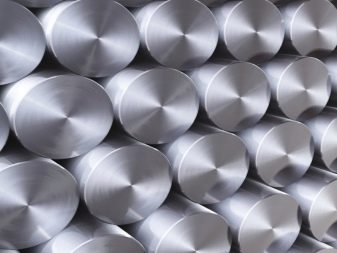
So that the heavy weight of the product does not interfere with work, it is better to choose the aluminum option. Perhaps such a rake will last a little less, but your hands will not get tired of them either. Products made of plastic or plastic are considered comfortable and lightweight, but they will not last long. An alternative to them will be wooden products.
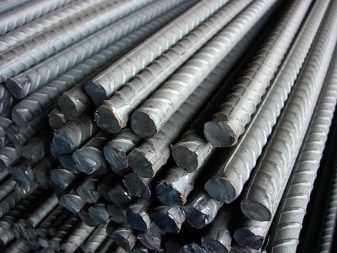
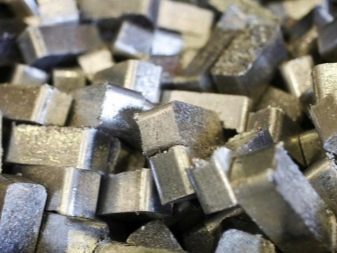
How to choose a comfortable rake
In order to competently choose this tool, you need to think about which the work will be done by him, on what ground and with what application of forces. The strength of the tool is determined by the material from which it is made. A rake made of wood and plastic can only be used for light work - harvesting grass and hay, while a metal rake is used for soil cultivation.

When several people work with one tool, it is better to purchase a rake with a sliding handle, they are suitable for people of different heights.

A rake with a narrow comb will be a godsend for lovers of flower beds and berry front gardens, they will allow you to penetrate into the most difficult areas and refine them.

If you want to get at your disposal a tool that you will use for many years, then purchase it in specialized stores where they provide a quality certificate confirming the service life and material of manufacture.

The handle should fit snugly with the comb. Sparsely or frequently planted tines will characterize the range of work they perform, with a sparse tine rake for cleaning large debris, while a fine tine rake for picking up small leaves and stones.

Remember that the material of manufacture determines the weight of the tool. If you want a lightweight tool, buy a rake with an aluminum or wooden handle, its thickness also matters - the standard is about 3 millimeters.

Choose the right cutting length for your height. When working on the ground, the handle can reach up to the shoulder. For picking up weeded grass and debris, the length of the handle is the same as your height. The length of the handle should be taller than your height when picking light grass and leaves.

Types and features
There are several types of rakes:
- garden (they are Soviet pin or straight),
- with "twisted" teeth,
- aerator,
- fan,
- for lawns,
- mini rake,
- transformers.
Ideally, to have different modifications in the country, since they all serve for specific purposes and, for example, it will not be possible to loosen the ground qualitatively after digging the garden with fan-shaped ones. To understand their application in work, let us consider several options in more detail.
Straight (Soviet pin)
Such a rake is universal and can be found in almost any household. They are used for loosening the soil, forming regular beds, leveling the ground. They can clean out plant debris, grind large pieces of soil that have formed during digging, pull out the roots remaining there.

A simple pin rake has 8 to 12 teeth. Most often they are painted with dark enamel. There are models with an increased grip (with 14 and 16 teeth), they are suitable for working on a large area. The broader tool saves time and effort.
The handle for the handle can be either plastic or metal.
Twisted
This type of rake is made of thick metal and therefore they are heavier and more durable. The twisted design of the teeth also adds strength to them.
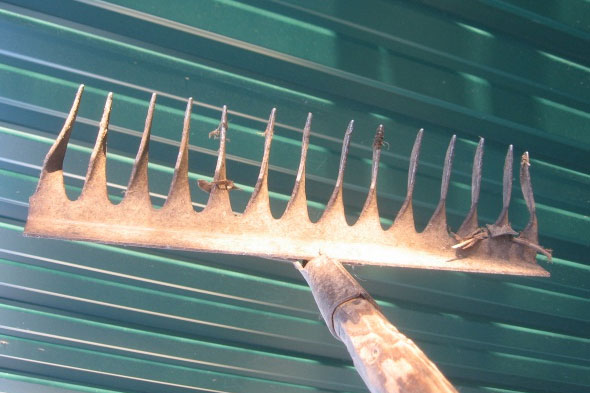
Suitable for heavier and rougher jobs. There is no need to be afraid of breakage.
Rake aerators
If the soil is very heavy on the site, then even twisted teeth will not help. Here it is already worth taking a closer look at the aerator type. This "heavy artillery" is made from hardened galvanized steel.
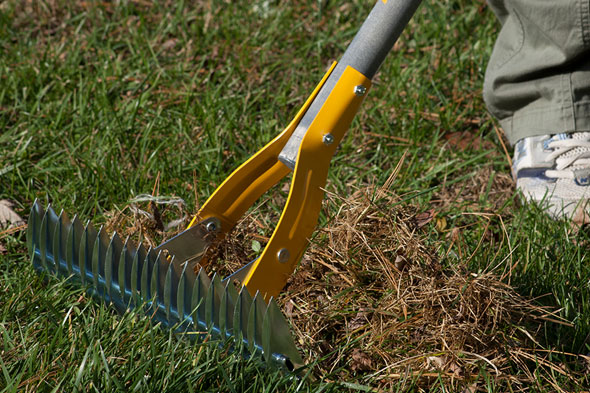
They have very sharp teeth, bent in the form of a sickle, with which they literally cut through the ground. The tool is double-sided.
Fan-shaped
In order to remove small debris, loose leaves or simply comb the lawn, a fan rake is required. They can be plastic or steel. From the rest they are distinguished by long springy teeth.
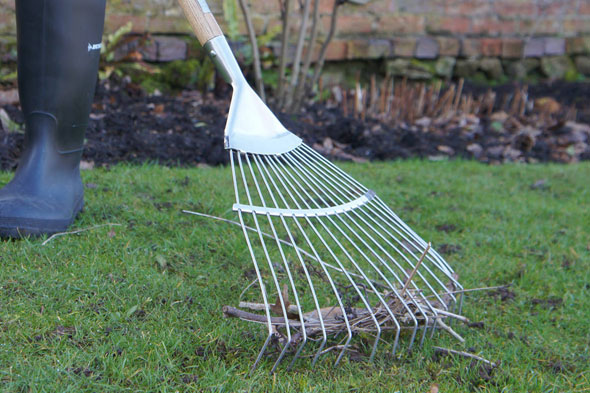
Lawn
This type of rake has very densely planted teeth. The width varies from 50 to 60 cm, and in the upper part there are bounding arcs that do not allow the collected grass to crumble.
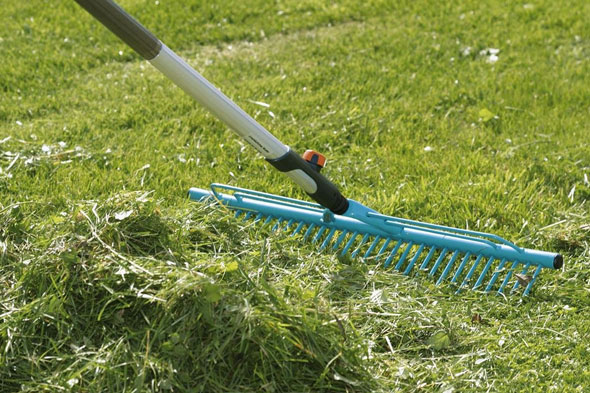
The tool greatly facilitates the task of collecting mowed grass (for example, if the mower does not have a grass catcher or was mowed with a trimmer or a conventional hand scythe).
Mini rake
There are also mini rakes with a short handle. They are intended for the care of small flower beds, indoor plants, for loosening the row spacing in the beds.
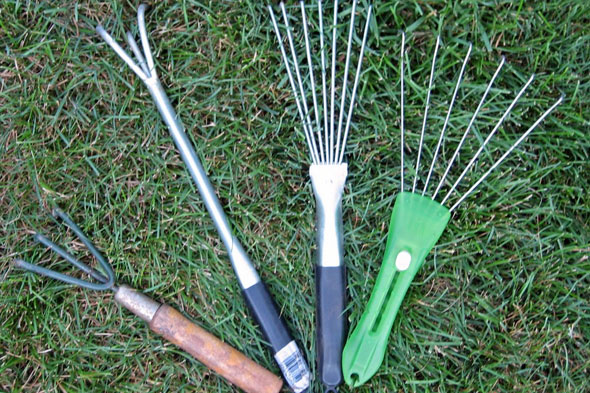
If you work with a large rake, you can easily damage the plant, and using such a mini-assistant it is easy to get to hard-to-reach areas.
Transformers
This is a whole set, which includes a handle and several attachments.Usually it includes a rake for picking leaves, ordinary rakes, a flower bed attachment and a few more options.

Having such a set, there will always be something to work with. It takes up much less space than a bunch of individual tools and is easy to transport.
Serrated rake
This rake not only resembles a fan in appearance, but can also be folded, changing the width of the working surface. The peculiarity of this garden tool is the absence of a "ridge", every one of the teeth originate from one point, which actually explains the name "fan".
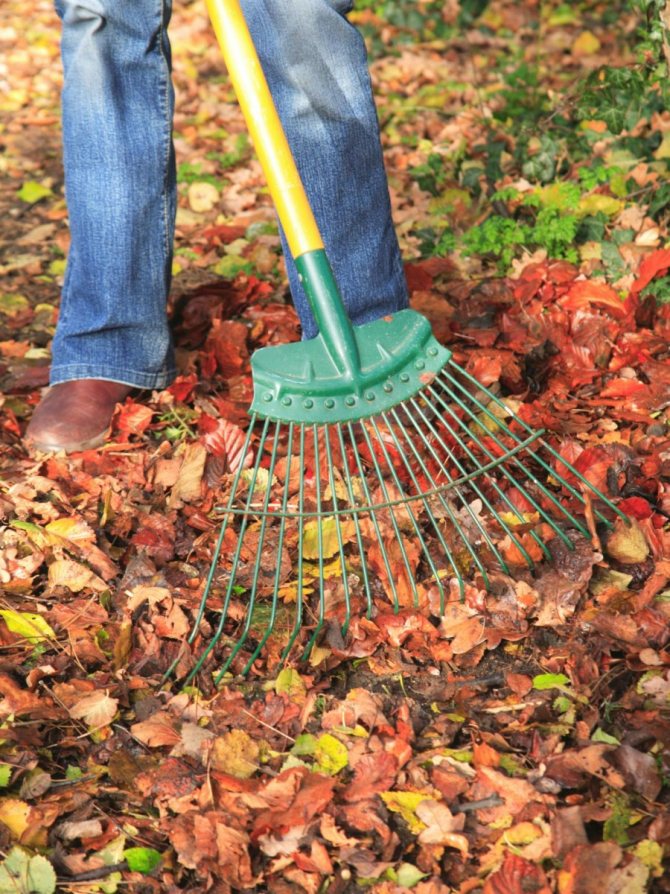
- Garden composter - which one to choose? Review of the best views for a summer residence (100 photos)
-
Garden wheelbarrow - instructions on how to choose a ready-made one, or do it yourself. (110 images)
-
Electric chain saw - which one to choose? Overview of models 2018-2018. Tips from the pros!
These rakes began to move apart only in the 21st century, and before that they wore a static look. The teeth are flat or round in shape, the creation of this rake goes back to the origins of the rock garden in Japan.

